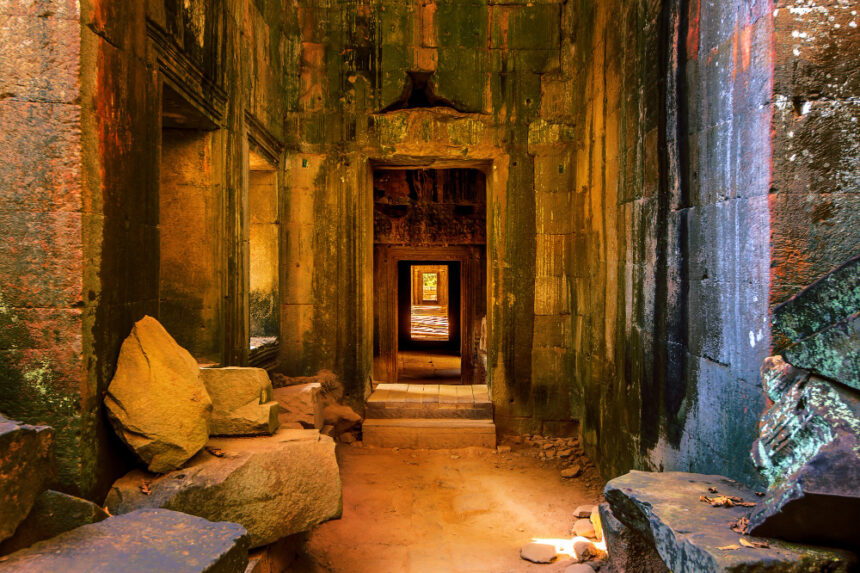Nestled in the vibrant city of Madurai in southern India, the Temple of Mînâkshî stands as a testament to the region’s rich cultural and spiritual heritage.
In the heart of the ancient city of Madurai, India, lies one of the largest temples in the country. Overlooking the six-meter wall surrounding the site, the famous temple is a beacon for the 15,000 pilgrims who flock to the state of Tamil Nadu every day.
Dedicated to the goddess Mînâkshî, the incarnation of the Hindu goddess Pârvatî, it is one of the rare religious monuments in India to be dedicated to a female divinity. Known as “the goddess with fish eyes » because of her perfectly shaped eyes, Mînâkshî embodies fertility and love.
This temple celebrates divine union with its lover, Sundareshvara (Shiva among Hindus). At the heart of the site are two sanctuaries dedicated to them. Every evening, Sundareshvara is transported to the silver chamber of Mînâkshî during an elaborate procession before being brought back to his quarters at the time of morning prayer.
deities,This sacred place is a masterpiece of Dravidian architecture, famous for its gigantic structures and tall gopurams, or towers, surrounded by ornamented pillars.
Its four main entrances, each directed towards one of the cardinal points, cannot be seen anywhere else. Thousands of brightly colored stone statues depicting animals, deities, and demons make up the walls of the temple’s fourteen towers, the tallest of which rises to 52 meters in height.
They are repainted and restored every 12 years. The Hall of a Thousand Pillars, which serves as the temple museum, also features painstakingly carved columns.
The temple was first built in 600 CE by Tamil Hindus before being destroyed by Muslim conquerors during the 14th century.
250 years later, during the 16th century, the sacred site was rebuilt into the sumptuous building as we know it today. According to ancient Tamil literature, it was originally built by survivors of the vanished continent of Kumari Kandam, a mythical land that stretched across the Indian Ocean.
The Mînâkshî temple is to many people in southern India what the Taj Mahal is to northern India. A multitude of pilgrims come to the site to meditate, join the prayers of resident Brahmin priests, and bathe in pools decorated with golden lotus flowers, known to bring good luck to those who immerse themselves in them.
Mark

